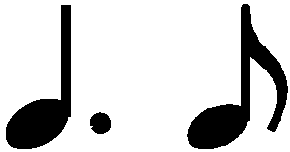



Issues : Dotted rhythms and triplets
|
b. 37-45
|
composition: Op. 27 No 1, Nocturne in C# minor
..
In bars 37-42 and 44-45 in GE (→FE→EE) the semiquaver of the double dotted rhythm in the right hand was moved beyond the third note of the second triplet of the accompaniment. This misleading, inauthentic notation was also used for the double dotted rhythm in bar 49 and in the notation of dotted rhythms throughout the Nocturne - cf. bars 5-13. See also: the note to bars 29-36 and the chapter devoted to that topic in: Jan Ekier, Introduction to the National Edition, Editorial Issues. category imprint: Interpretations within context issues: GE revisions , Dotted rhythms and triplets |
|||||
|
b. 45-46
|
composition: Op. 2, Variations, complete
..
In the main text, we place a demisemiquaver under/over the last note of a semiquaver triplet in each of the 4 places where such a combination occurs, in accord with the notation of A (→GE→EE,FESB). In FE1 (→FE2) the demisemiquaver in these figures is placed after the last semiquaver of the triplet. This is certainly an arbitrary revision of the engraver of this edition, who had not yet seen that Chopin was using this Baroque-Classical convention, which in the 19th century was gradually superseded by a notation conforming with the strictly calculated nominal rhythmic values of the notes. In all places (as well as in bar 44) AsI notes a dotted rhythm in twice the rhythmic values, as category imprint: Differences between sources issues: Dotted rhythms and triplets , FE revisions |
|||||
|
b. 48
|
composition: Op. 27 No 1, Nocturne in C# minor
..
Just like in bars 29-36, in bar 48 of GE the rhythm category imprint: Interpretations within context; Differences between sources issues: GE revisions , Dotted rhythms and triplets |
|||||
|
b. 49
|
composition: Op. 27 No 1, Nocturne in C# minor
..
In bar 49 in GE (→FE→EE) the semiquaver of the double dotted rhythm in the right hand part was moved beyond the third note of the second triplet in the accompaniment. This inauthentic notation, misleading for the performer, was also used in bars 37-42 and 44-45.
See the chapter devoted to that topic in: Jan Ekier, Introduction to the National Edition, Editorial Issues.
category imprint: Interpretations within context; Differences between sources issues: GE revisions , Dotted rhythms and triplets |
|||||
|
b. 50
|
composition: Op. 27 No 1, Nocturne in C# minor
..
In GE (→FE) notes of the R.H. rhythm category imprint: Interpretations within context; Differences between sources |



 . This is an obvious mistake.
. This is an obvious mistake.

 is irregularly presented against the triplets.
is irregularly presented against the triplets. 


